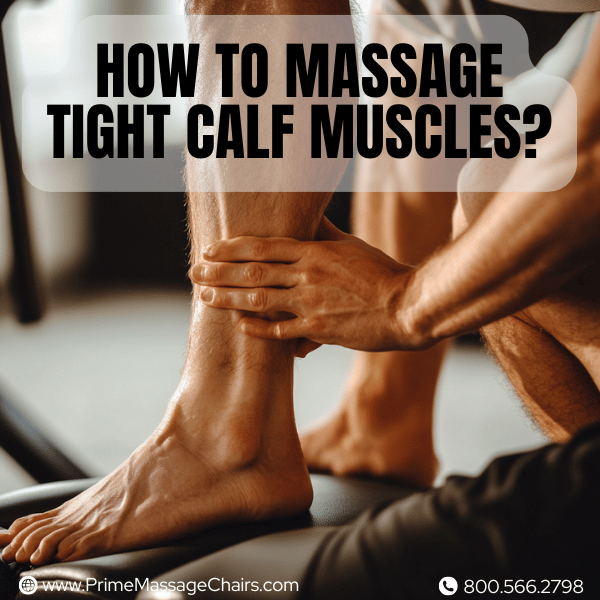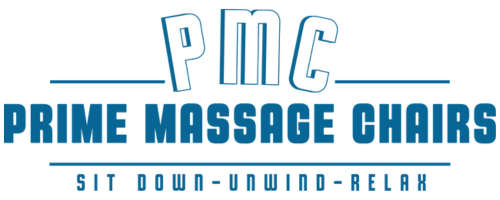
How To Massage Tight Calf Muscles: Effective Techniques!
Learning how to massage tight calf muscles may provide relief from discomfort and improve your overall flexibility.
This post will show you how you could safely massage your calfs and potentially alleviate pain.
Keep reading.
Why Do Calf Muscles Tighten?
Calf muscles may get tight for many reasons. Some common causes could be overuse, lack of stretching, and sitting for too long.
Common Causes of Tight Calf Muscles
Using your calf muscles a lot may make them tight. This could happen when you suddenly do more intense activities or change how much you use them.
For example, running fast or playing sports that need quick starts might cause this tightness.
Also, changing your shoes could affect your calf muscles. New types of footwear may change how you walk or run, leading to muscle strain.
Wearing the wrong kind of shoes for certain activities might also lead to overstretching.

Overstretching could occur in sports with lots of running and sudden movements.
Tight calf muscles may result from these changes in activity level or footwear type.
Next, we will look at how massage could help loosen up these tight calf muscles.
Signs and Symptoms of Tight Calves
Tight calf muscles may make life hard. You might feel pain that stops you from walking well.
Your calves could feel very hard to the touch. Standing on your tiptoes or just standing for a while might hurt a lot.
Muscle tightness could lead to discomfort, severe pain, and difficulty in daily tasks.
You may also find it tough to move around easily. This happens because your muscles are not relaxed.
Next, we will explore if massage could help with these problems.
Can Massage Help Loosen Tight Calf Muscles?
Massage may help loosen tight calf muscles. It could improve blood flow and help muscles relax.
Massage might make the whole muscle softer, reducing pain and tightness. A 20-minute calf massage may even lower your heart rate and blood pressure.
People may feel more relaxed after a calf massage. Massage therapy could be good for overall heart health.

Tools like foam rollers or massage balls may work well on tight calves. These tools might help your muscles become less stiff and reduce discomfort.
Techniques to Massage Tight Calf Muscles Like a Pro
Using Your Hands for Deep Tissue Massage
Start by warming up the calf muscles. This prepares them for a deeper massage.
Use your hands to make crisscross actions with your thumbs. This may help reach deep tissue in the calf muscle.
Apply more pressure near the heel's outer area. For tight spots, press hard and hold for 20 to 40 seconds.
Foam Roller Techniques for Calf Muscles
Using a foam roller on your calf muscles could improve flexibility and blood flow. Roll the tool up and down your legs to break down tissue adhesions.
Doing this before exercising might help you run slightly faster and become more flexible.

A study published in the Journal of Strength and Conditioning Research found that foam rolling before activity can improve flexibility by increasing range of motion without negatively affecting performance.
Foam rolling may also reduce muscle pain after workouts.
The effects of massage may vary depending on individual health conditions. Consult with a healthcare provider to determine if massage is appropriate for you.
Stretching Techniques to Complement Massage
Adding stretching exercises to your routine may help relieve tight calf muscles and enhance the effects of massage. Effective stretches include:
-
Wall Stretch: Stand facing a wall, place your hands against it, and extend one leg back while keeping the heel on the ground. Hold for 20-30 seconds.
-
Seated Forward Bend: Sit with your legs extended and reach toward your toes, keeping your back straight.
-
Downward Dog Pose: This yoga pose can stretch both your calves and hamstrings effectively.
These stretches may improve flexibility and further reduce tightness in your calves.
Stretching exercises should be performed gently and within your comfort zone. If you experience pain, stop immediately and consult a professional.
Trigger Point Therapy with Massage Balls
After rolling out your calves with a foam roller, you could use massage balls for trigger point therapy.
Apply gentle to medium pressure on sore spots and roll the ball around until the pain eases.
Repeat this up to twice a day to target hard-to-reach areas in your calves.
Heat and Cold Therapy for Muscle Relief
Heat and cold therapy could enhance muscle recovery alongside massage.
Additionally, heat may relax muscles and improve blood flow, making it an excellent pre-massage option. Applying a heating pad or warm towel for 10-15 minutes can help.
Cold therapy might reduce inflammation and numb pain, making it useful after intense activity.
Use an ice pack wrapped in a cloth for 10-15 minutes to soothe sore calves.
Heat and cold therapy should be used with caution, especially if you have circulation issues or skin conditions. Consult a doctor if unsure.
Nutritional Tips for Muscle Recovery
Proper nutrition may support muscle health and prevent tightness. Consider these tips:
-
Stay Hydrated: Dehydration could lead to muscle cramps and tightness. Drink plenty of water throughout the day.
-
Electrolyte Balance: Consuming foods rich in magnesium, potassium, and calcium may help maintain muscle function. Examples include bananas, leafy greens, and nuts.
Incorporating these habits alongside massage could promote overall muscle health and reduce the likelihood of future tightness.
These suggestions are not a substitute for professional medical advice. Consult a healthcare provider to ensure these habits are appropriate for your individual health needs.
Strengthening Exercises for Resilient Calf Muscles
Strengthening your calf muscles may reduce the risk of tightness and improve overall muscle function. Try these exercises:
-
Single-Leg Calf Raises: Stand on one leg, raise your heel off the ground, and then slowly lower it back down. Repeat 10-15 times on each leg.
-
Resistance Band Work: Sit with your legs extended and loop a resistance band around the ball of your foot. Push against the band with your toes, then slowly release. Perform 10-15 repetitions per foot.
Incorporating these exercises into your routine could build muscle resilience and help prevent future tightness.
Always consult a healthcare professional before starting any new exercise routine, especially if you have pre-existing conditions or concerns.
When to Avoid Massaging Tight Calf Muscles
Sometimes, massaging tight calf muscles could do more harm than good.
For example, if you recently hurt your calf or have signs of a blood clot like deep vein thrombosis (DVT), skip the massage.
Acute Injuries and Muscle Strains
Avoid massaging areas with acute injuries or muscle strains for at least four days after the injury occurs.
This wait may prevent further damage. Serious issues like muscle tears or atrophy should be checked by a doctor.

Untreated tight calves could cause significant problems in daily life.
Always consult a healthcare professional before attempting massage on injured areas.
Deep Vein Thrombosis (DVT) Risks
Deep vein thrombosis is a condition where blood clots form in the legs. It may cause heaviness, swelling, redness, and pain.
Massage might worsen DVT by pushing against clots. If you suspect DVT, consult a doctor before attempting any massage.
FAQs
What Is the Best Way to Massage Tight Calf Muscles at Home?
The best way to self-massage tight calf muscles involves using manual therapy or tools like foam rollers and massage balls.
Apply the right amount of pressure to avoid pain.
How Does Massaging Help Relieve Soreness in My Calves?
Massaging may increase blood flow, reduce inflammation, and alleviate muscle fatigue. It could be effective for conditions like shin splints and plantar fasciitis.
Can Massaging My Calves Help with Back Pain?
Yes. Tight calf muscles may cause low back pain due to muscular imbalances. Relieving tension in the calves could reduce back pain.
Does Regular Self-Massage Have Any Long-Term Benefits?
Regular self-massage may improve blood flow, enhance flexibility, and maintain muscle health over time.
When Should I Seek Medical Advice for My Tight Calf Muscles?
Seek medical advice if symptoms persist or worsen despite consistent massages. A physiotherapist could provide advanced care for persistent issues.
Conclusion
Understanding how to massage tight calf muscles can help reduce pain, improve circulation, and prevent future muscle strain.
Massaging tight calf muscles gets easier with practice. Use hands, foam rollers, or massage devices to work on muscle knots.
Combine massage with stretching exercises, strengthening routines, proper nutrition, and heat or cold therapy for best results.
Be cautious with strains or risks of deep vein issues. With these tips, anyone may make their calves feel better fast.
Disclaimer:
We do not provide medical advice. The content of this article, including text, graphics, and other material, is for informational purposes only. It is not intended to be a substitute for professional medical advice, diagnosis, or treatment. Always seek the advice of your physician or other qualified health provider with any questions you may have regarding a health condition. Never disregard professional medical advice or delay in seeking it because of something you have read in this article or on our website.
